Best electric gravel bike – charge up your gravel riding
The best electric gravel bikes will take you on longer rides and bigger climbs on everything from pavement to singletrack
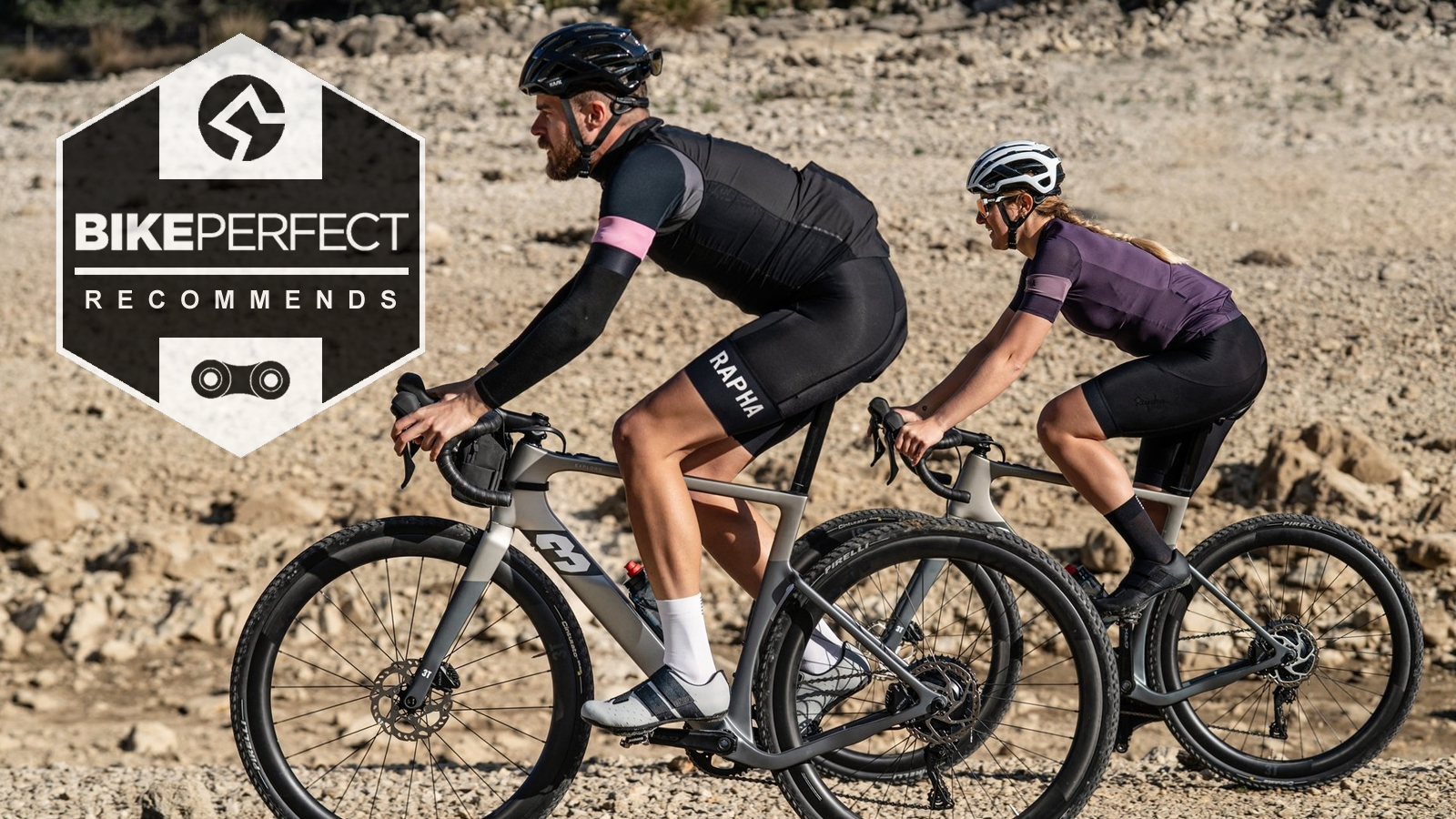
The best electric gravel bikes give you some extra power when tackling gravel rides, while also offering the ride features that have made the best gravel bikes a go-to option for cyclists looking to ride far and fast off-road.
Whether your interest is just exploring further or gearing up for a bikepacking adventure, adding a motor to a gravel bike expands your horizons, letting you ride further, or just helping you tackle steep and gnarly trails more easily.
As we explain in the buyer's guide to electric gravel bikes lower down the page, most e-gravel bikes come with comparatively low torque motors, which along with lower capacity batteries make for a lighter bike and a ride that's more like an unassisted gravel bike.
As with the best electric mountain bikes, they stand in contrast to models with beefier motors and larger capacity batteries that have the output to help you climb hills more easily, but may feel heavier on twisty singletrack. Take a look at our best e-MTB motors guide to get a feel for the differences. There are also motor systems used on e-gravel bikes that aren't usually found on electric mountain bikes.
Once you've got your electric gravel bike, take a look at our guide to the best e-bike accessories and upgrades - although geared to e-MTBs, they're also useful for electric gravel bikes.
Best electric gravel bikes
Why trust BikePerfect
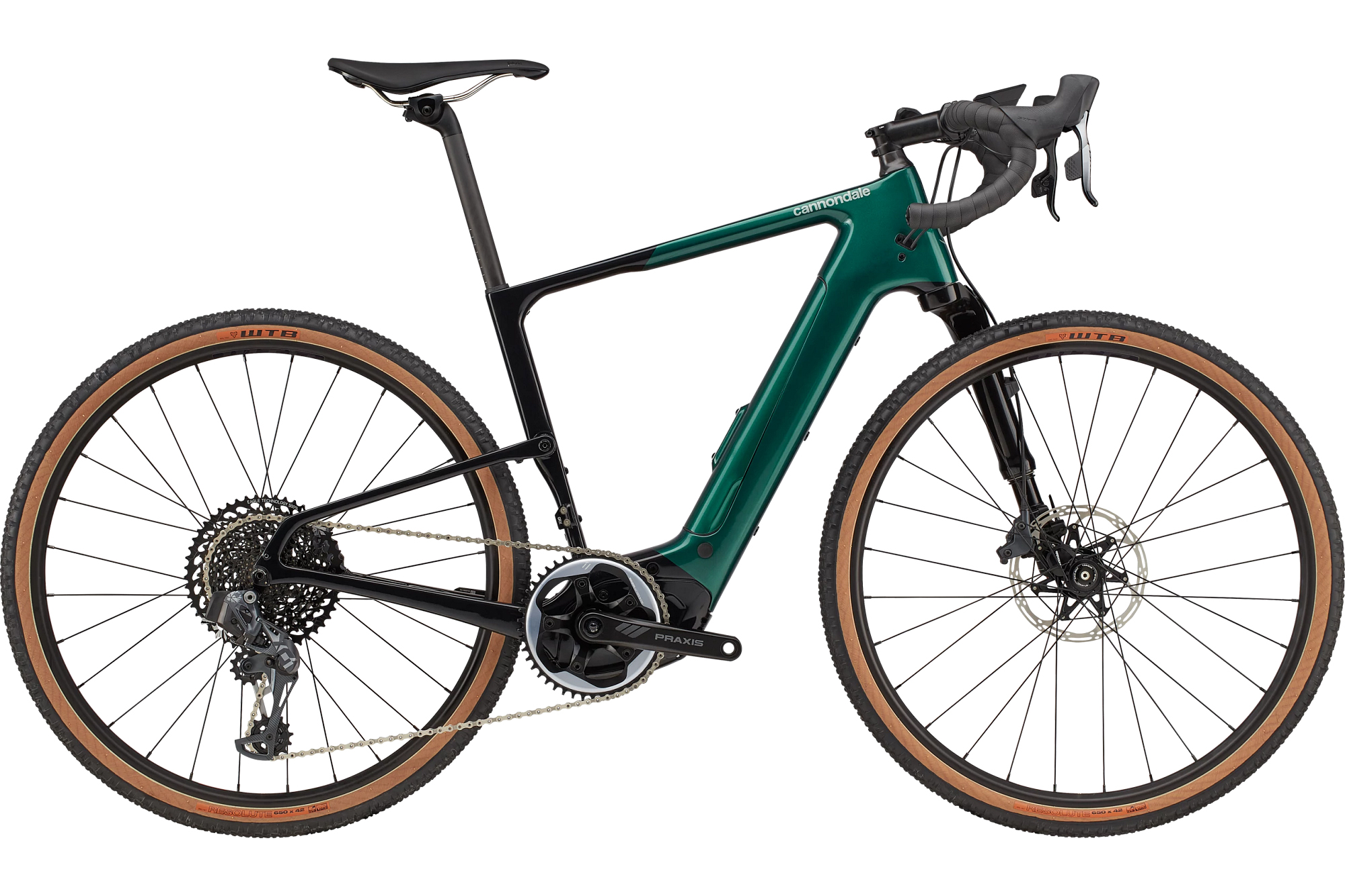
Cannondale Topstone Neo Lefty 1
Specifications
Reasons to buy
Reasons to avoid
The Cannondale Neo Carbon Lefty 1 builds on the standard Topstone Lefty with a carbon frame and front and rear suspension. The rear is a passive suspension system using the natural flex in the carbon layup and a thru-axle pivot which Cannondale calls the kingpin rear suspension system and that promises up to 30mm of movement at the saddle.
On the front is a revised version of the gravel Lefty suspension fork first introduced on the Slate gravel bike. There's 30mm of air-sprung suspension movement from the Lefty to match the rear. The look is polarizing but it's a system tuned for the needs of gravel riding and it works.
The chosen power unit for the Cannondale Neo Carbon Lefty 1 is a 250 watt, 85Nm Bosch Performance Line Speed system. It's designed to work well even at low cadence and provide a sporty riding feel. The Cannondale Neo Carbon Lefty is one of the few full-fat electric gravel bikes sold, so you pay for the extra power with a bike weight approaching 40lb/18kg.
The groupset is a mullet combo of a SRAM Force crankset and eTap AXS shifters paired with an MTB X01 Eagle 12-speed rear derailleur. Cannondale has opted to spec the Neo Carbon Lefty 1 with 650b wheels rather than 700c, shipping with 42mm tires with frame clearance of up to 47mm.
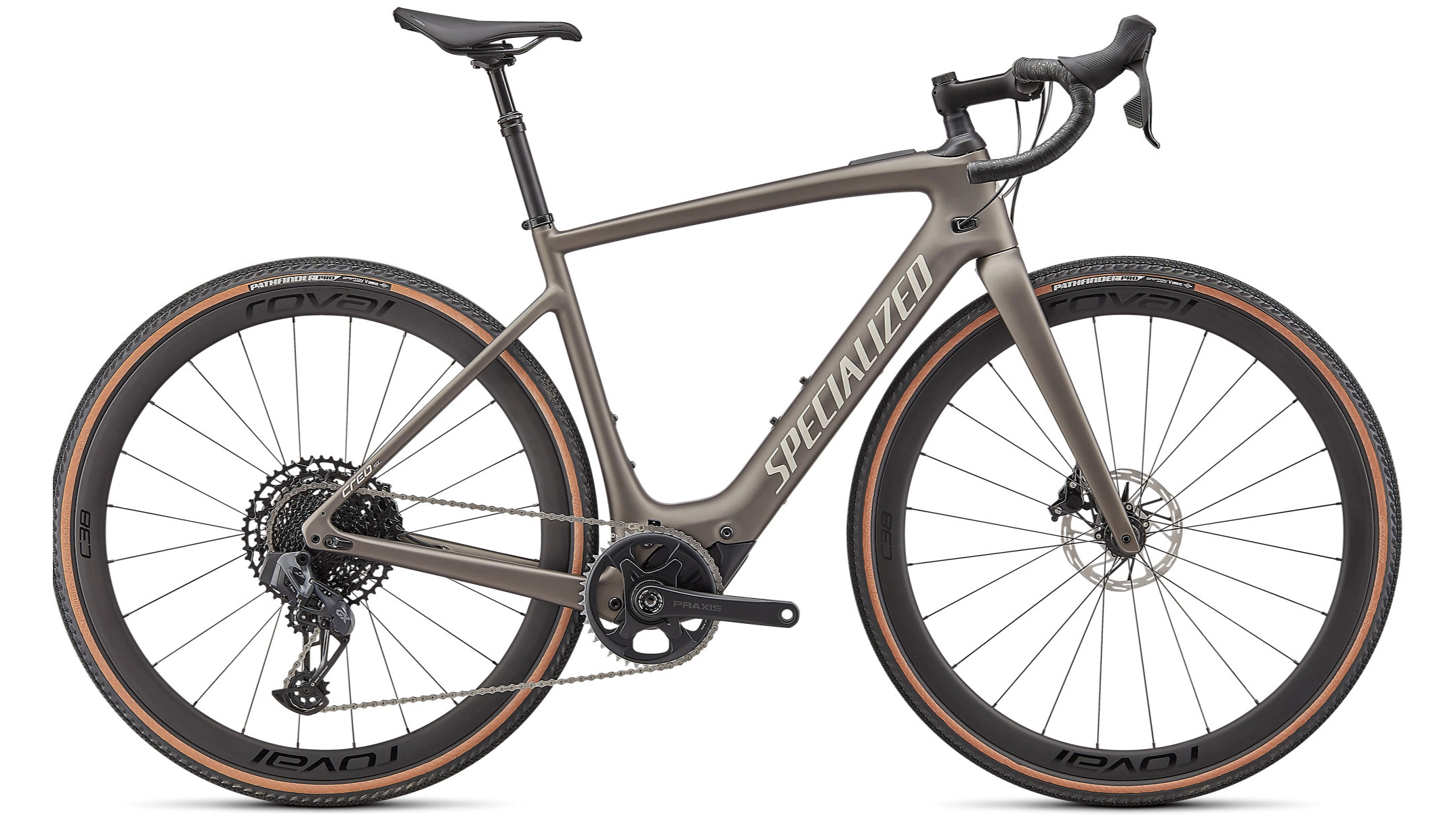
Specialized Turbo Creo SL Expert EVO
Specifications
Reasons to buy
Reasons to avoid
Specialized names its e-bike gravel models by adding Evo to the road-focused models. The actual design of the two models is similar, with the geometry between the two bikes being exactly the same. On the gravel-focused Evo models, you'll find a different wheel and tire package, flared handlebars, and a dropper post with 50mm of travel. Specialized also specs its Future Shock 2.0 suspension under the stem for additional comfort. If you want a bike that can move between paved rides and off-road rides and handle both, Specialized is a great choice.
The low torque, low weight, custom-designed SL 1.1 motor from Specialized is not a high torque system designed for handling steep technical trails and obstacles. Instead, there's only 35Nm of torque on demand but by keeping a light touch, the range gets extended to a quoted 80 miles and the weight stays low. The mileage can be extended by 40 miles with a range extender battery that sits in a bottle cage if you are planning a big day out. The system also has no resistance when not working, so if you want to conserve battery or go for an exclusively human-powered ride you won't feel any drag from the motor.
With its own motor and interface, Specialized's Mission Control App allows you to check the battery and customize modes. Specialized has also integrated a power meter into the motor, that can connect to your GPS via ANT+, and provide extra ride stats regarding the effort you are putting in.

Trek Domane+ SLR 9 eTap
Specifications
Reasons to buy
Reasons to avoid
Like Specialized, with the new Domane+ SLR Trek offers the same frame in road-going and gravel specs. All the road-going specs get Shimano two-ring drivetrains, while gravel specs are fitted with SRAM single-ring chainsets and chunkier 40mm Bontrager tires, making them suitable for lighter off-road use. In the US, the Domane+ is speed limited at 28mph; in the rest of the world at 25kph.
All the range uses the same OCLV 800 series carbon fiber. They're all powered by a motor from German brand TQ with 50Nm torque and an internal 360Wh battery. It's lightweight. compact, quiet and has a low Q-Factor of 163mm. A neat feature is that assist level is controlled via buttons on the hoods. You can add a range extender battery which Trek says ups the range from 60 to 90 miles.
Claimed weight for this top gravel spec SLR 9 eTap is just 27lb/12.2kg, making it one of the lightest electric gravel bikes available. You do pay for the high spec, although Trek also sells the Domane+ with eTap AXS drivetrains and Force and Rival level which bring the price down a little.
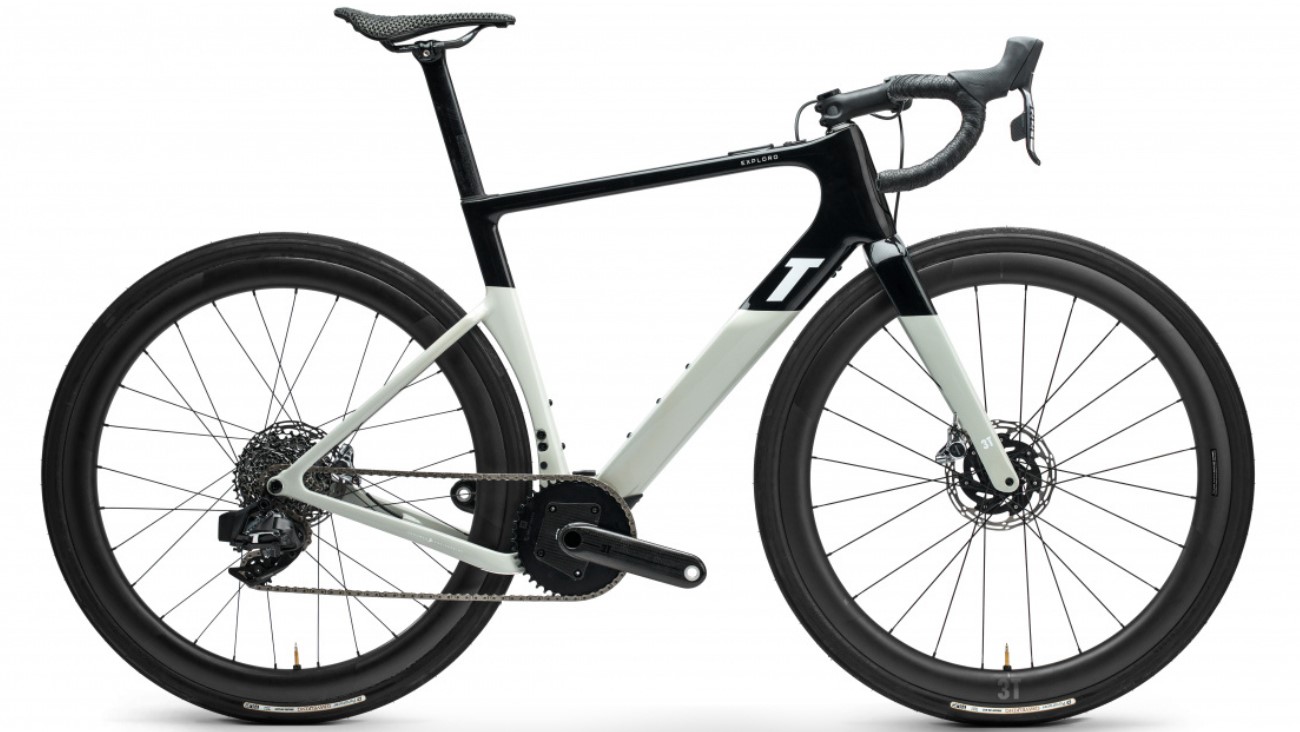
3T Exploro Racemax Boost
Specifications
Reasons to buy
Reasons to avoid
3T was an originator of the fast gravel category with the Exploro, which has aero tube profiles to give you an edge in speed. The Exploro Boost adds the latest Mahle ebikemotion X20 rear hub motor system to that, replacing the original X35. The newer X20 system motor is even more compact, with higher torque than the X35, while a new torque sensor is claimed to make for more measured power delivery.
3T was able to fully enclose the 250Wh battery in the Exploro's chunky down tube without modification and, as with the X35, you can add a range extender, which can sit in the bottle bosses under the down tube, so you've still got two useable bottle cage mounts. There's up to 61mm tire clearance, plus there are integrated fender mounts.
This top Euro spec of the Exploro Racemax Boost gets SRAM Red eTap AXS shifting paired with a 3T Torno carbon chainset. It's not yet available Stateside, where 3T is still selling the older X35 powered bike, but expect the motor and spec upgrade to make its way across the pond from Italy in the next few months.
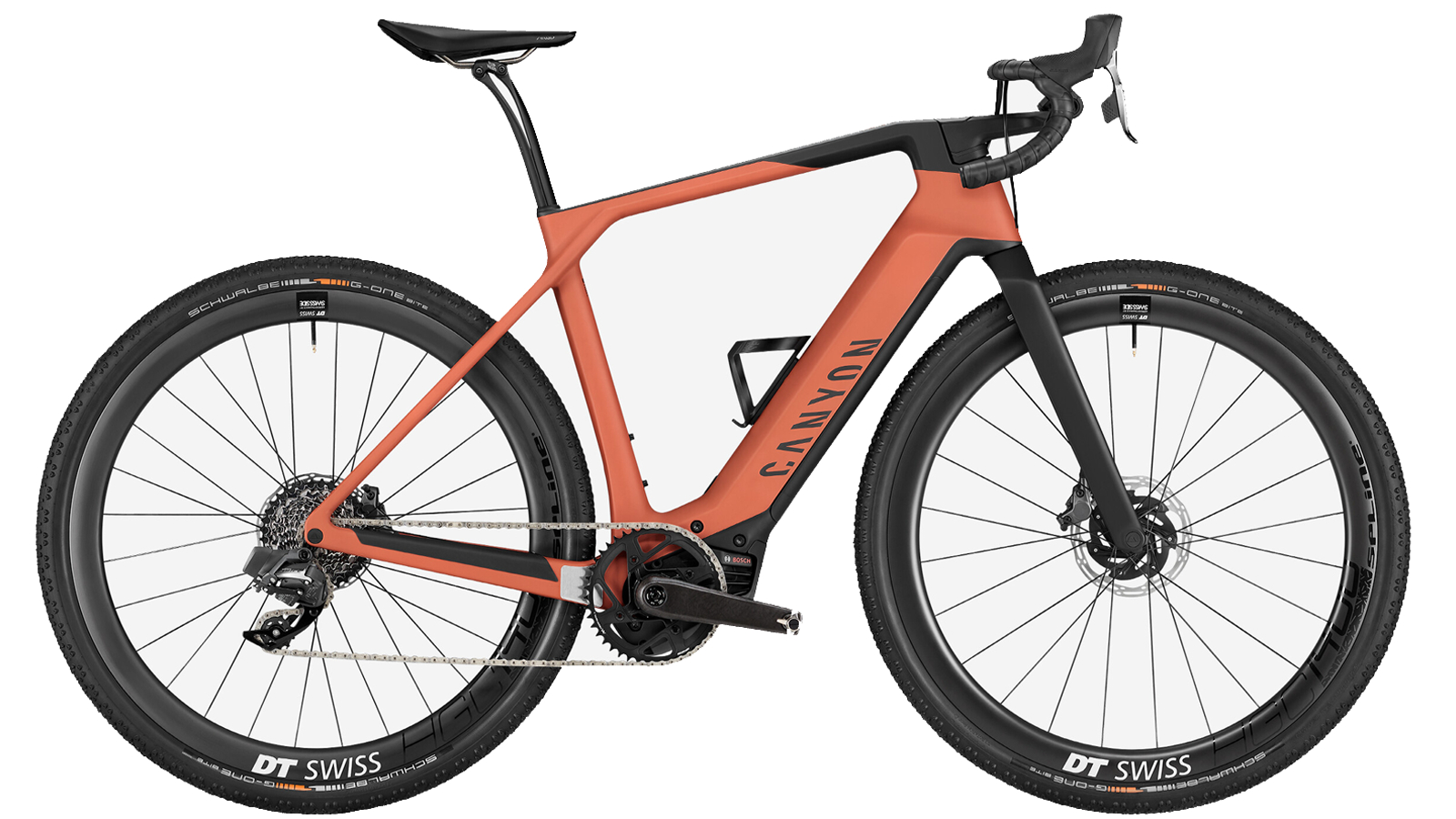
Canyon Grail:ON CF 8 eTap
Specifications
Reasons to buy
Reasons to avoid
The frame of the Grail starts with a unique double-decker handlebar setup referred to as the Gravelcockpit. Instead of going down the route of suspension, with all its potential tradeoffs, Canyon chose to go with a passive system. The intent is still increased comfort through increased front-end compliance, but it's lighter and simpler. The double bar also gives a more upright riding position that suits long days covering rough ground without a long headtube. Like the Lefty fork, it works well but its looks are polarizing.
For the motor system Canyon has used a more mountain bike-focused higher torque system from Bosch called the Performance Line CX (Gen4). The system focuses on smoothly handling of roots, steps and stones, even in low cadence and high torque uphill situations where you need to control power to maintain traction.

Giant Revolt E+ 28mph
Specifications
Reasons to buy
Reasons to avoid
When you look at the best electric gravel bikes out there, they are almost all class 1 e-bikes (see our guide below for an explanation of the different classes). The drive system is there as a support and the focus isn't on mixing with traffic. There's not much need for the max 28mph that a class 3 electric bike is capable of.
The Giant Revolt E+ Pro, on the other hand, is a bike designed for versatility that carries a class 3 motor. The tagline is "from city streets to rugged backroads," and it is capable of moving in and out of traffic with ease. This is a great choice if you see yourself splitting time between fire roads and commuting.
The bike uses Giant's SyncDrive Pro motor which is developed by Yamaha. It's another full fat motor system with 85Nm torque in the highest assist setting and a 500Wh battery to match. There is the option to add an external range extender battery which adds an additional 50 percent of battery capacity for taking on huge rides.
Drivetrain duties are handled by Shimano's GRX groupset and the bike cruises on fast-rolling Maxxis Receptor semi-slick gravel tires.
You can buy the Giant Revolt E+ outside the US too, where it's speed limited at 25kph.

Alchemy E-Ronin GRX Disc
Specifications
Reasons to buy
Reasons to avoid
If you like the sound of a hand-made carbon bike from the USA then Alchemy is the answer. Since 2008 Alchemy has been putting out work like no one else. All the manufacturing for every bike happens under the roof of its Denver, Colorado headquarters. That in-house manufacturing makes for added flexibility. The electric-assist limits custom geometry options for the E-Ronin, but if you’d like to make your bike unique, custom paint starts at $500.
Other perks include a crash replacement discount, a two-week money-back guarantee, free shipping, and a lifetime warranty. There are four available builds and five frame sizes. There’s also the extremely rare (for electric bikes) option of buying only the frame and building it up yourself.
Alchemy has specced a Fazua motor which may not deliver the same power output as other motors but helps contribute to the impressively light claimed weight of under 30lbs and will give the bike a natural ride feel. You also get plenty of tire clearance and mounts for three bottles and a bento box.
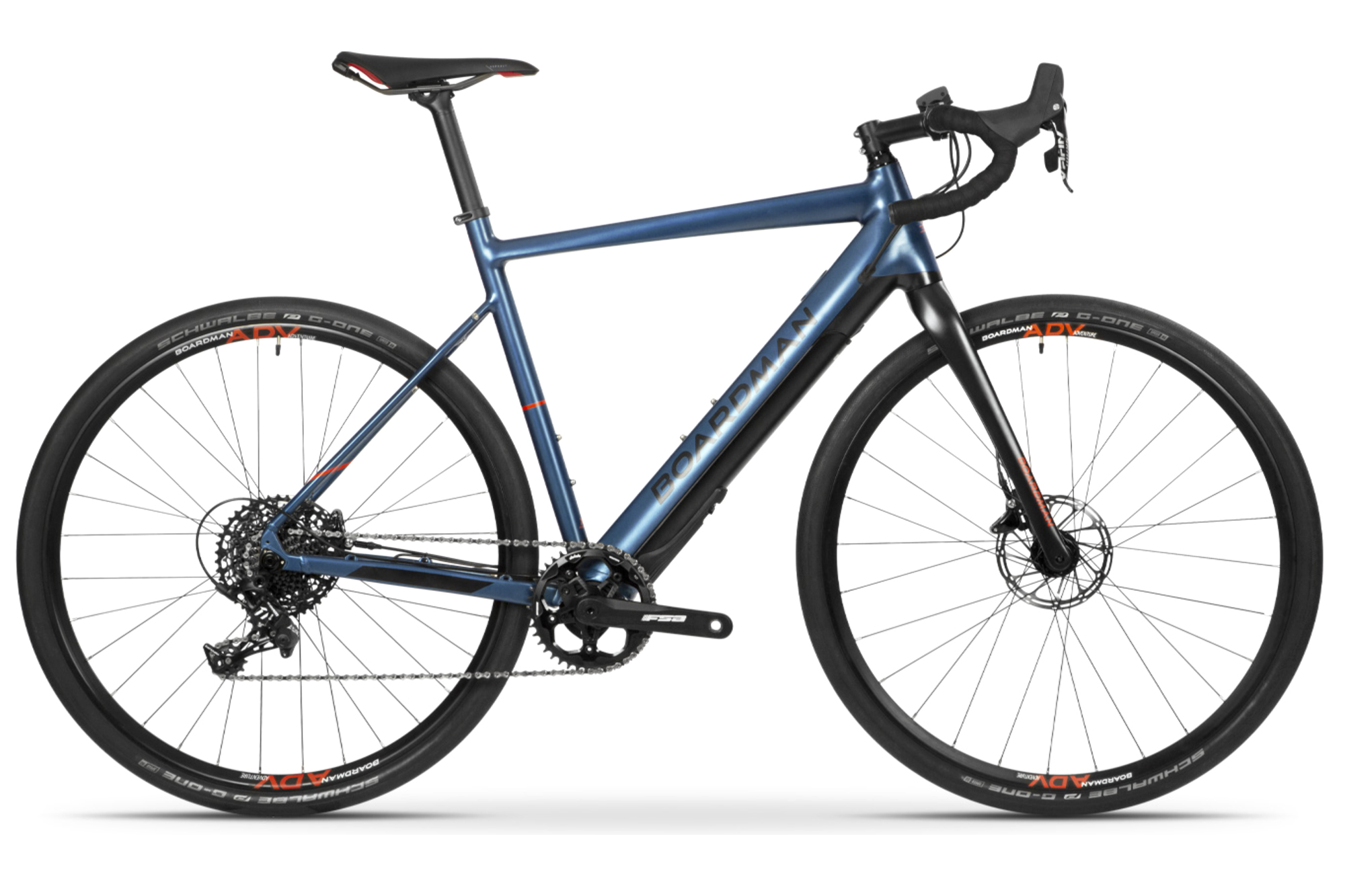
Boardman ADV 8.9e
Specifications
Reasons to buy
Reasons to avoid
At £2,799 the Boardman ADV 8.9e isn't exactly an entry-level bike. Look at what else is on offer in the electric gravel bike category though, and it looks a lot more reasonable. If you like the idea of the Fazua drive system, the Boardman ADV 8.9e has the lowest price tag available on the market.
It might be the cheapest available, but Boardman has still managed to put together a compelling package. The frame uses aluminum as a nod to keeping the price contained but it's still managed to spring for a carbon fork. The running gear consists of a SRAM APEX 1x11 groupset with hydraulic disc brakes, Boardman alloy cockpit and wheels, and a Fizik saddle.
At this stage in gravel bike design, the included 38mm Vittoria Terreno Zero tires are far more suited to light gravel and comfortable on-road use. If you lean closer to the mountain bike side of gravel biking you might look for a plusher setup. On the other hand with a low price and tire width that's perfect for the everyday commute the Boardman ADV 8.9e makes for a very compelling all-around bike.
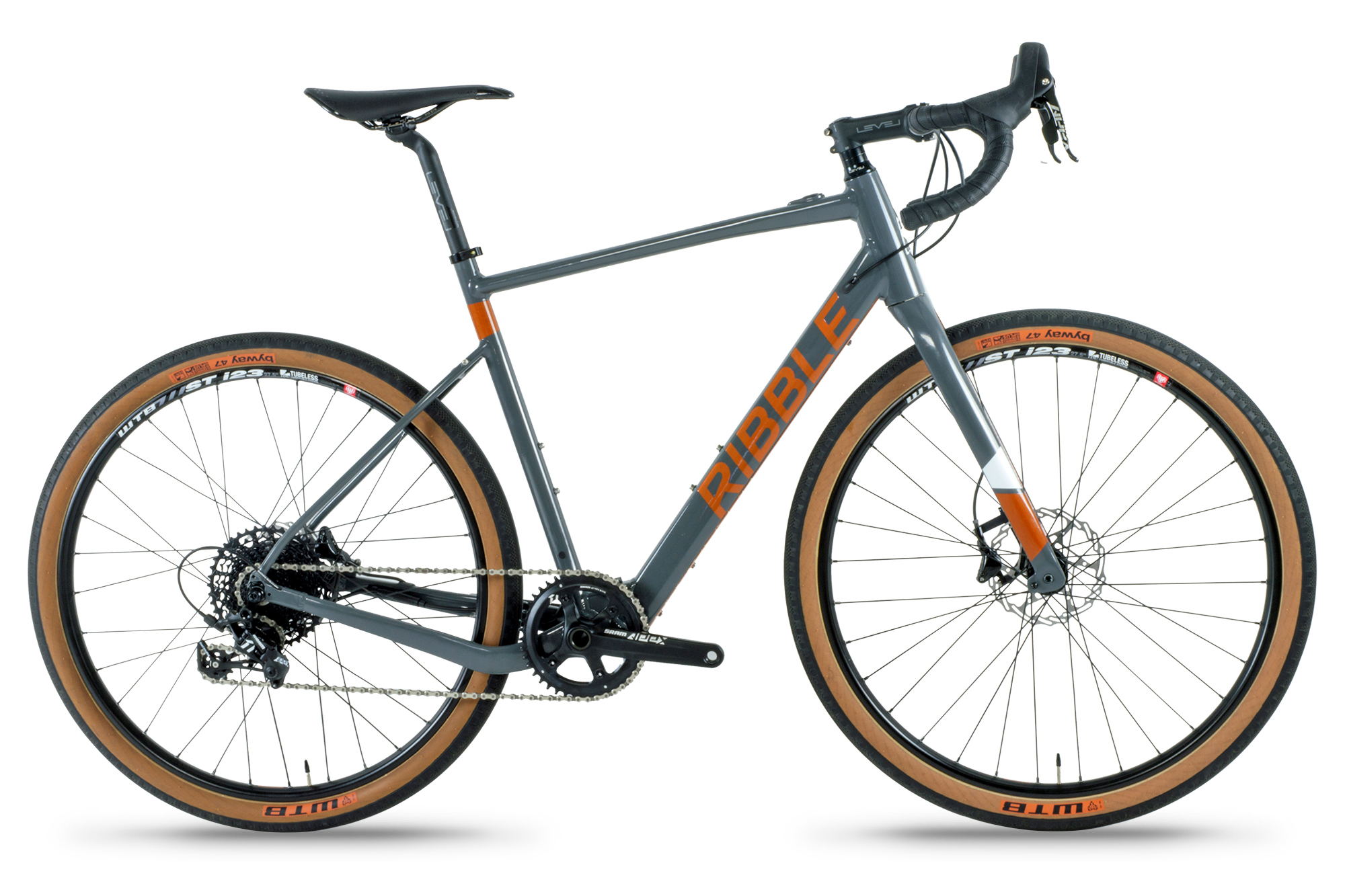
Ribble CGR AL e Apex 1
Specifications
Reasons to buy
Reasons to avoid
The Ribble CGR AL e is one of the cheapest electric gravel bikes on the market. There are a variety of levels available and they start way down at $2,767.65 / £1,915.83 for a two chainring Shimano Tiagra version.
Find just a little bit more though and the SRAM Apex 1x 650B retails at $3,113.75 / £2,082.50 and gets you a build that is much more capable off-road.
On the SRAM bike, a 1x11 drivetrain keeps the system simple and lightweight. There's less to break, less that needs adjusted, and less to think about when shifting. The SRAM Apex rear derailleur also includes a clutch that helps keep the chain from bouncing over rough roads. Along with the change in groupset the generously sized 650b wheels make for a much more comfortable ride.
Whatever configuration ends up fitting your budget the Ribble CGR AL e uses the Mahle ebikemotion X35 drive system. While the Ribble bike is a budget bike this same system shows up on CGR AL e-bikes at all price ranges with all the models using the same integrated downtube battery.
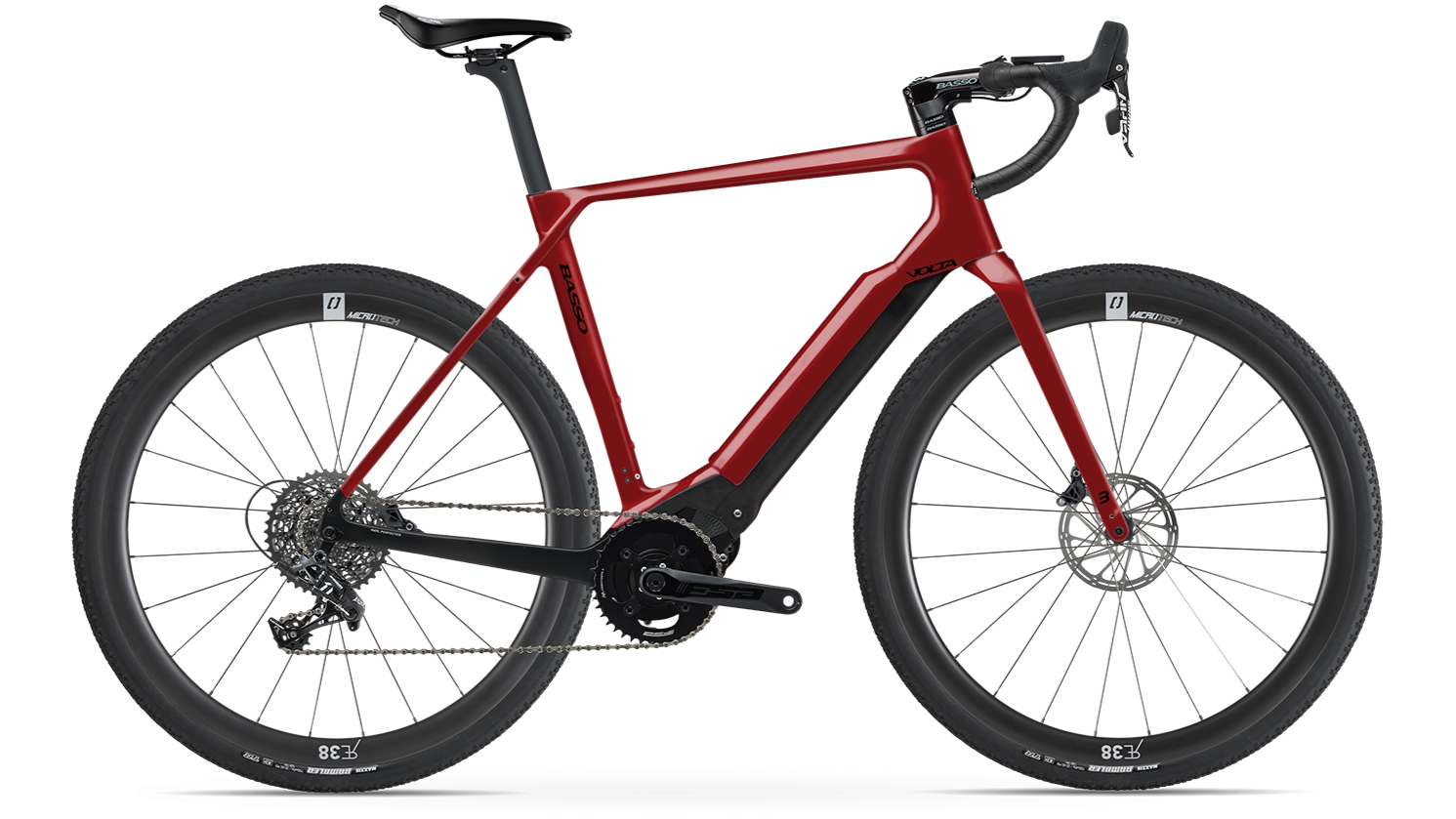
Basso Volta
Specifications
Reasons to buy
Reasons to avoid
With the Basso Volta the idea was to take the muscle-powered Palto and add more versatility. The hand-built carbon frame gets a new layup and internal structure but retains a similar geometry. The Palto is more of an all-road or gravel race bike than a bike meant for rugged adventuring. Keeping the same geometry maintains the same sporty ride feel to the Palta, while the motor adds a helping hand when you need it.
Keeping the bike light was a priority for Basso Bikes and the Italian Polini motor fills that need. The 250W (500W max) motor weighs in at only 2.8kg and sports one of the best power-to-weight ratios in the industry. The 75Nm torque is a bit lower than the Bosch drivetrains used by some but still puts the Basso Volta in the full fat electric gravel bike range and is paired with a 500Wh battery. At 16.5kg for the whole system, it's still light enough to pedal without assistance though.

Look e-765 Gravel
Specifications
Reasons to buy
Reasons to avoid
The Look e-765 gravel is a two for one deal. On one hand, it's a capable e-bike with up to 400W of pedal assist if you want it. There's a solid app available for monitoring anything you can think of. Through the app, any battery system details you might want to know are available at a glance as is all the normal ride-tracking data you'd expect.
If you'd rather ride a traditional leg-powered bike, you can remove the entire drive system. The Fazua system houses everything in a Drivepack system. Combined in a single unit you'll find an integrated motor and electronics as well as a removable battery. Simply slide the battery into place and then insert the whole unit into the downtube or swap it with a cover. With the drive system removed there's only a small weight penalty over a non-motorized bike and the now-empty cavity is perfect for storing ride essentials.
How to choose the best electric gravel bike
How fast can I go on an e-bike?
In the US electric bikes fall into one of three classes:
- Class 1 e-bikes have pedal assist up to 20mph and no throttle.
- Class 2 e-bikes have pedal assist up to 20mph and also a throttle up to 20mph.
- Class 3 e-bikes have pedal assist up to 28mph and a speedometer. It's also common to see a throttle that works up to 20mph.
Most electric gravel bikes are class 1 bikes and that's because class 2 and 3 bikes can face limitations around trail access. Every location is different, and not all states even acknowledge the class system of e-bike identification but, in most cases, class 3 e-bikes will not be usable on trails. No matter what kind of electric bike you choose it's a good idea to investigate access in the places you want to ride them. Pay extra attention if you like the idea of a class 3 e-bike and the higher speeds they are capable of.
In the rest of the world, electric bike motors are normally speed limited at 25kph/15.5mph and in Europe they can't be throttle operated. That means that there's a significantly larger global market for lower-speed electric bikes than for Type 3 equivalent, which also means that fewer high-speed pedelecs are designed by bike brands.
How much torque do I need?
Regulations mean that most electric bike motors are limited to 250 watts of continuous power output, but torque can vary significantly.
As with the best electric mountain bikes, there's a divide between "full fat" electric gravel bikes with higher torque motors with torque outputs of 65Nm up to 90Nm or so and "lite" models with lower torque figures of around 40Nm to 60Nm.
But where there's a wider range of full fat electric mountain bikes available than lite models, the reverse is true for electric gravel bikes.
A higher torque motor will help you get up steeper grades, but it will usually be heavier and take a higher load from your battery, so the battery too is likely to be heavier. A lower torque motor will mean you need to do more of the work, but you'll get a considerably lighter electric gravel bike in return, which may handle more like a non-electric gravel bike.
Unless you're consistently riding very steep terrain, it's likely that a lighter, lower torque motor will be a better option. You'll have more choice of bikes too.
What motor systems should I look out for?
The same brands of electric bike motors are used across the majority of electric bikes.
The lowest output motor used in lightweight electric gravel bikes is the Mahle ebikemotion X35 rear hub with 40Nm torque, although it's being superseded in many electric bikes by the similar X20, which has higher torque of 55Nm, but a comparably light system weight of around 3.5kg.
You'll also see mid-drive motors (in the bike's bottom bracket) from the German brand Fazua used in many electric road and gravel bikes. As we've mentioned above, it has the advantage of a removable battery, so you can turn your electric gravel bike into a considerably lighter non-assisted bike with a large storage area in the down tube.
Another German brand is TQ. It's a new entry into the electric bike motor market, although it's got a considerable track record in aerospace and robotics. Its mid-drive motor is very compact and quiet, with 50Nm torque. It's currently only found in the Trek Domane+, but BMC's Fourstroke AMP electric mountain bike now also uses the system, so expect to see more electric gravel bikes from more brands using the TQ motor.
Higher torque gravel bike motors are dominated by mid-drive Bosch units with up to 85Nm torque output. They're larger and heavier though, with the motor weighing around 2.8kg. Other brands in this space are Yamaha (which is used on Giant electric bikes) and Shimano Steps.
How large a battery do I need?
Related to the lite vs full fat question is the size of the battery. A lower torque motor is likely to have a smaller capacity battery of 200Wh up to 350Wh.
In contrast, a full fat electric gravel bike's battery is likely to have a capacity of 500Wh or more. That makes it heavier and so more difficult to move around.
What's the range of an electric bike?
Comparing electric-assist bikes there are a whole lot of numbers that get thrown about. Range is sometimes measured by vertical gain and sometimes by distance. The batteries employed get listed by the watt-hours they hold and there's maximum torque available for the motors. It can all get overwhelming fast when all you want to know is how far can you go.
How far you can go is the hardest spec to figure out. Whether it's the rider, the bike, or any accessories, more weight adds up to the more power the battery will need to supply. If you ride into a headwind, you'll use more power. Spend your day on the bike climbing hills and again you'll use more power.
It's likely you want the best gravel tires on your gravel bike and knobby tires have higher rolling resistance; that resistance means more power is needed to keep you rolling. If you were riding a non-electric bike these are all the same factors that would determine how you felt on a given ride. Different motor systems and a rider's preferred choice of modes will have a massive effect on energy demands too.
With such a huge set of variables, it's almost impossible for brands to offer an accurate range. That said it is possible to compare the theoretical range, which involves taking the watt-hours capacity of the battery and power rating of the mode you would choose to ride (measured in watts). For example, most motors put out 250 watts of assistance in turbo mode, which means if you have a 500Wh battery you can theoretically ride for two hours with full assistance and cover 40 miles.
Obviously, the real-world variables mentioned previously will reduce that total mileage but there are other factors that will save battery. Even if you have the motor set in boost mode it won't always be pushing out full assistance and, on the flats, Eco mode is often more than enough to help you keep a good pace. Also on downhills, it's very easy to exceed the motor's speed limit and so you won't be using any assistance at all and save more energy.
How much work do I need to do myself?
Going hand in hand with the range discussion is the question of how much work you want to do. One of the best ways to extend range is to do more work with your muscles and ask less of the bike. Every electric bike has a variety of settings that offer variable levels of support to make that easy.
The numbers that show what you get at the various levels are max watts and support ratio percentage. A low mode might offer a 50 percent support ratio percentage with a max of 250 watts. Meaning however many watts your muscles put into the bike the motor will add an additional 50 percent until the max of 250 watts.
It's comparatively easy to exceed 25kph on an electric gravel bike, particularly on blacktop or smoother, flat off-pavement runs. In countries where electric bike motors have to cut out at 25kph, that means that the motor won't be working on these stretches and so you'll be providing all the power and won't be draining your battery. Most electric bike motor systems are designed so that they have little or no drag when not providing power making it easier to maintain speed.
Josh Ross was our US tech writer. He's most happy when talking about the finer details of how bicycle parts and components work, and enjoys putting his thoughts to words. He is a road cyclist at heart but can often be found taking the gravel road less traveled. Although he rarely races these days, he still enjoys a good Zwift session and race but will always choose the real world over pixels.
Height: 5'9"
Weight: 137 lb.

